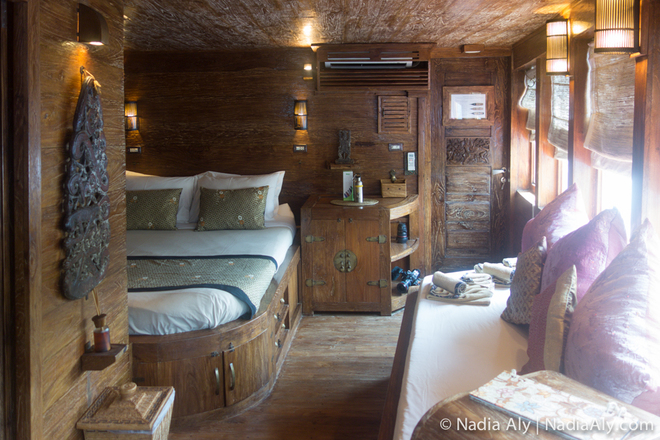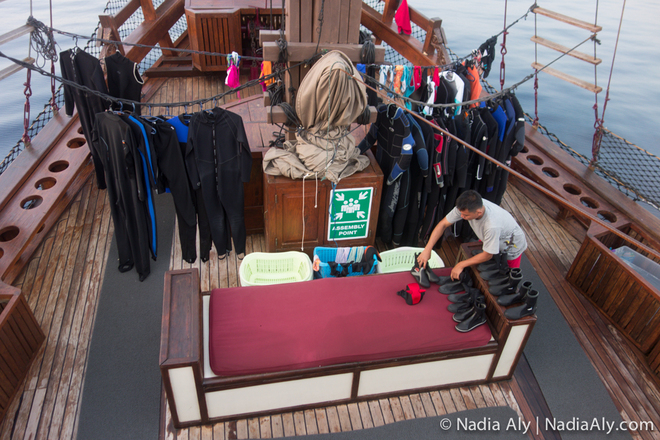In this four-part article, we’ll cover a range of tips for making the most of your dive holiday. While written primarily with liveaboard diving in mind, a number of these tips also apply to other dive-centric holidays.
Liveaboards arguably make for the ideal diving holiday. They offer easy access to remote, unspoiled dive sites, require only a short commute from your room to the water and have very little to distract you from the rhythm of diving, eating and sleeping. What’s not to like?
But for the novice diver who has never before been on a liveaboard, there’s a lot to consider to make the most of a hard-earned diving vacation. We’ll start with the basics – choosing which operator to go with, which type of boat is best for you and what kind of itinerary best suits.
[imgshare]http://scubadiverlife.com/wp-content/uploads/2013/09/thumbnail1.jpg[/imgshare]
Picking Your Liveaboard
There are many hundreds of liveaboard charters out there. And while the vast majority of them are good and professional, there remain the odd bottom feeder amongst them. Using online dive boards, guides on diving web sites or within dive magazines and general travel websites can help you weed out the worst of the bunch. The industry also has a number of awards designated to liveaboard operators, and it’s always a safe bet to choose liveaboards that are among the recent winners.
Start by going through the liveaboard’s website. Does it seem professional and up-to-date? Does it feature thorough information on trips, destinations and requirements for divers wishing to participate? Try contacting the operator to see if their answers are timely, informative and service-minded.
It is worth considering the type of ship you want to be aboard, too. The typical liveaboard boat is usually around 120-feet-long and motor-powered, with hulls made from either steel or wood. For liveaboards that operate close to the coastline or in generally calm waters, boats with either steel or wood hulls are fine. But if you have reason to expect rougher seas during your trip (say, for reaching dive sites located farther offshore) or long travels (deep south liveaboard routes in the Red Sea, for example), a boat with a steel hull is preferable as it can more efficiently cleave through the seas, rolls less and is able to travel at higher speeds.
Also check the fine print for the itinerary you’re considering. A number of trips require specific certification levels, skills or dive experience, so make sure you are able to comply. For example, a liveaboard may require you to have at least advanced certification, 50 logged dives and night dive certification. It would be a shame to choose such a liveaboard if your skills aren’t in compliance as you’d end up missing out on dives due to insufficient training. The good news is that many liveaboards offer onboard courses. So if you require deep or night diving certification, for example, try contacting the liveaboard and inquire about the opportunity to take a specific course on board.
It’s also important that you consider the nature of the dives on any given trip and whether or not they match with your interests. A trip to an area known for drift dives isn’t going to be a good match for you if you’re uncomfortable with strong currents.

Among the many good sites to research information are scuba diving websites and their forums and social media sites dedicated to scuba diving. The following are among the questions you may want to ask:
1) What sort of checks does the liveaboard use to ensure all divers are onboard after a dive? Any liveaboard should have a number of security methods for ensuring that divers are back on the boat after each dive. Methods may include head counts, tag-and-dive boards, roll calls or a dive leader greeting you when you get out of the water to check your name off a list. Good liveaboards will use a combination of these methods to make sure everybody is back on board.
2) How are the briefings? Briefings are when the dive guides prepare the guests for the dive to help them get the most from each dive site. Briefings should be professional, focused and informative. On the best liveaboards they’ll even be entertaining, but that’s not a strict requirement. But if past guests report that they felt ill-informed by the briefings or felt that only the basic information was covered (maximum depth and time, perhaps), you may want to steer clear of that particular operator mentioned.
3) How do liveaboards handle divers who don’t follow rules? Sometimes divers ignore the rules of a briefing, going deeper or staying in the water longer than is permitted. This is bad form as the limits are set with guest safety in mind. If the dive crew are reported to be laissez-faire on rules (again, check reports by former guests), you may want to consider a different operator.
4) Does the operator have a lot of return business? The best recommendation is return business. If guests go on repeat trips with a liveaboard company, that indicates that they’ve been happy with all aspects of the trip – from the diving, crew and accommodations to the food and briefings. So ask around to see if people are repeatedly diving with certain operators.

By researching these few, relatively easy-to-find bits of information, you’ll go a long way toward ensuring that you and your liveaboard operator – as well as the trip in question – are a good match. And that is an important step toward planning the perfect liveaboard holiday.
In the upcoming second part of this series, we’ll look at what to pack and how to prep for your trip.

